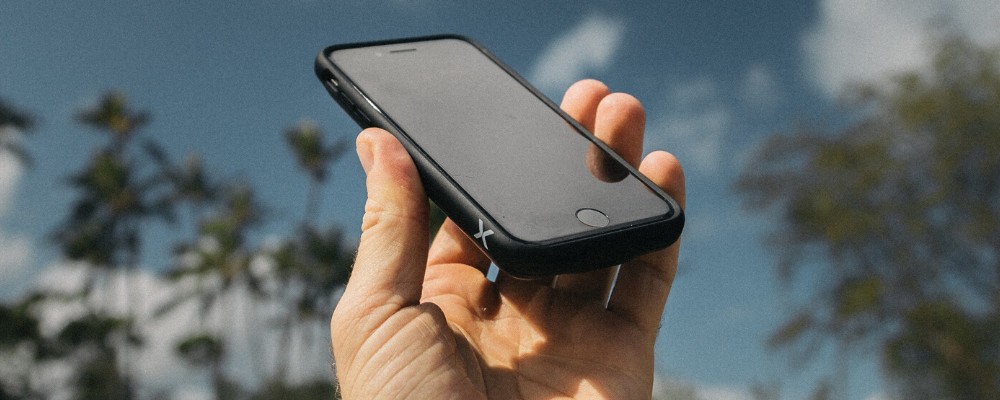Filter by Category
Filter by Category
Contents
Having your own social media app or branded community app is a great way of sharing the passion around your business and your community of customers. But how do you build a social media app that drives business growth
Social media presents one of the most promising (and crowded) markets of all. After all, almost everyone’s using it, and it that’s where your customers are, that’s where you need to be too. What might come as a surprise is that people are actually abandoning the mainstream social channels in droves, with many citing privacy concerns. But that doesn’t mean they’re no longer using social media at all. Instead, there’s a marked shift towards smaller online communities driven by shared interests, and it’s time for businesses to follow suit.
While consumers are growing tired of the incessant assault on our private lives, perpetrated by the likes of Facebook, businesses are also falling out of love with mainstream social media. The overarching reason for this is that the platform owners themselves are the ones in control, not the brands which depend on them for engaging their target audiences. When a single newsfeed algorithm update can undo everything you’ve worked so hard to achieve, the need to regain control over your social media strategy quickly becomes clear.
That’s why it’s probably time to build a social media app of your own. With your own app, you’re in control over the user experience. You don’t need to worry about unwanted updates being forced upon you, and neither do you need to worry about privacy and security issues with unwanted third-party integrations. Instead, you can build a community of your own where you get to choose how everything works. Naturally, this provides a greater sense of belonging which, in turn, leads to higher engagement rates and a better return on investment.
Here’s what you need to do to build a social media app for your business:
Step #1. Determine your business needs
People are now spending more time using their mobile devices that watching TV. The average time spent in front of the small screen is nearing four hours per day. Chances are, that’s also where your customers are, hence the growing business need to increase mobile presence. A social media app can keep customers engaged with regular updates, as well as providing a convenient place for them to chat with their peers. With a branded social networking app, you’ll also be able to keep your brand at the forefront of people’s minds.
While increasing engagement rates is one of the most common business goals, you may have something more in mind. For example, you might want to implement an additional stream of revenue by enabling social shopping experiences on the small screen. Other common goals include building a peer-to-peer customer support and success community or enabling product ideation through a close-knit social community. With a clear overview of your goals, you can match business needs to feature requirements.
Step #2. Choose an existing framework
The most common barrier preventing businesses from creating branded mobile apps is cost. But contrary to popular believe, there’s rarely any need to have an app developed from scratch. Unless you have extremely specific needs and circumstances, there are plenty of industry-specific frameworks to choose from, all of which can be customised to your needs without having to reinvent the wheel. Our very own Disciple platform is one such framework since it already lays the foundations for private brand social networks.
There are plenty of alternatives, however, which may or may not suit your needs. By far the cheapest and easiest is to set up a community in the form of a group on Facebook or LinkedIn, provided you’re prepared for all the shortcomings, such as low engagement rates and lack of control over functionality. Another solution, which comes with either free or paid options, is to use open-source forum software to implement a discussion board on your website. But that’s a far cry from a social media app that provides an optimal experience on the small screen.
Step #3. Customise your design
One of the main reasons to build a social media app yourself is to maintain complete control over the design process, functionality, and features. With your own branded app, you get to choose how it looks and works. Developing your own app gives you maximum control, but it can also be very expensive, and limited support can stifle future growth. That’s why it’s often better, particularly for smaller businesses, to choose an established framework that allows you to preserve your branding and accommodate your business goals now and in the future.
To keep your brand in the spotlight when people are using your app, you’ll want to ensure the user interface is consistent with the branding you use elsewhere. Customise your design by selecting your brand accent colours, typefaces, and logos. Not only will this ensure your brand stays on the centre stage; it will also provide an instantly familiar experience to your existing customers. The same applies to implementing features. To avoid feature bloat, only choose the features that will help make it as easy as possible for users to achieve the desired action.
Step #4. Test your app
Launching your app prematurely is one of the biggest mistakes you can make. If it’s not ready, it could end up being dead on arrival, and all your hard work will go to waste. The risks are substantially higher if you’re having your own app developed from scratch, so you’ll need to do a lot more testing before it’s ready for public release. One way companies do this is to get a select group of users together and give them a test run of a complete pre-release version of the app known as a beta.
If you’re having an app developed that’s already based on an established framework, then the risks will be much lower. Factors such as security and compliance should already have been taken care of, with the app being secure by design from the ground up. But you’ll still want to test the features and functionality to ensure you’ve got things just right. A popular methodology is A/B testing, which tests two different user experiences side by side to determine which one works best. This can be done both before and after release.
Step #5. Launch your app
You should start preparing for launch day as early as possible since you’ll likely need a few months to ensure everything’s ready and generate buzz. Around a month before launch, you should inform your customers on your website, by email, and over your social media profiles. Be sure to illustrate your unique value proposition in a way that instantly connects with your target audience. The very first thing you need to do is answer the question everyone’s asking – ‘what’s in it for me?’
Before you start promoting your pre-launch campaign, you’ll need an established timeline for launch, since the last thing you want to risk is overpromising and underdelivering. Make sure your app is ready to go through the app stores’ approval processes. Apple’s mobile store is significantly pickier, for example than the Google Play store, so it might take some more time for your social media app to get approved. This is another advantage of using an established framework, where the entire process can be outsourced to a third party.
Disciple branded community apps help brands enjoy all the benefits of community with an independent, valuable, and trusted platform in a safe space that they own and control. Build your social media app today by telling us about your goals.

Mike Harrower in
9 January, 2023
5 min read
Share:

See how Disciple can fit your business needs

Related Articles
8 min read
Everything you need to know to create a social network.
We have been asked many times about the best ways to create a social network. So, we decided …
9 min read
How to create your own social network
Social media has become an integral part of our daily lives. We use social platforms to be informed, …
18 min read






